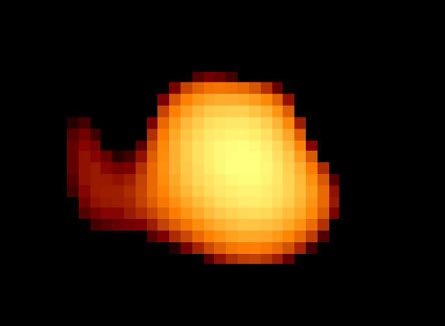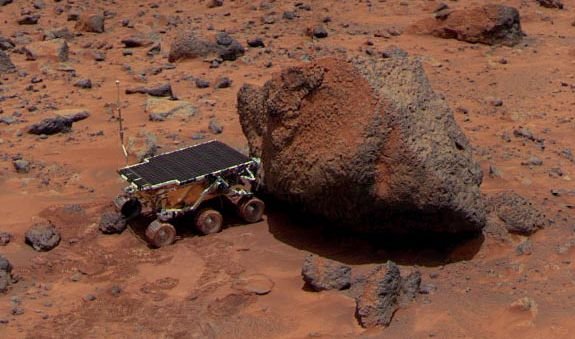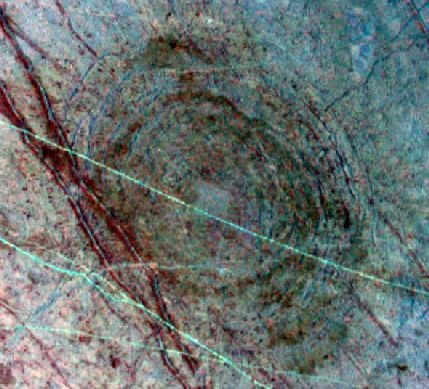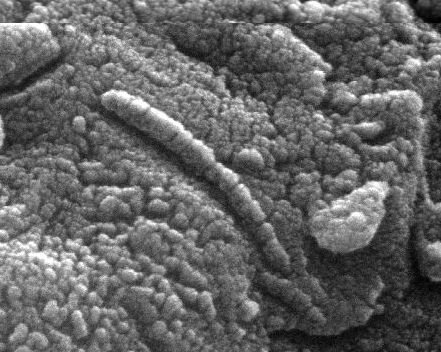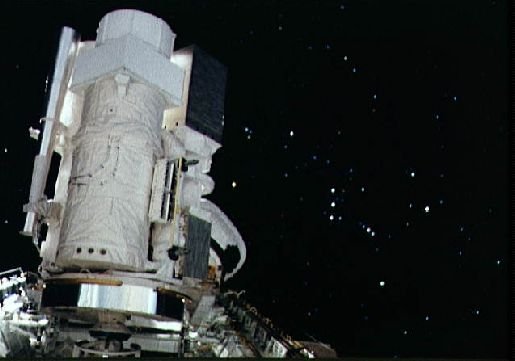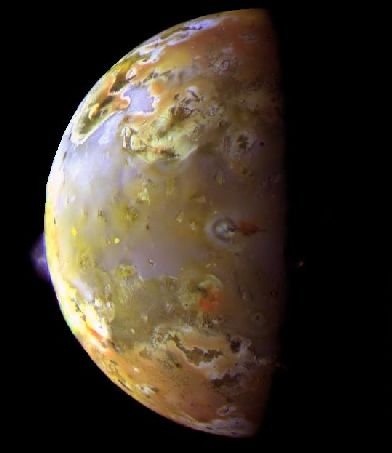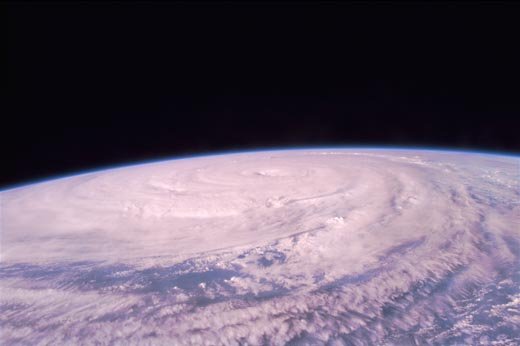NASA APOD #786-792
#786 Resolving Mira August 13, 1997
“Most stars appear only as points of light. Recently, Betelgeuse became the second star, after our Sun, to have it surface resolved. Now add Mira to the list. Mira A is a red giant star undergoing dramatic pulsations, causing it to become more than 100 times brighter over the course of a year. Mira was discovered to be the first variable star 401 years ago today by David Fabricus. Mira can extend to over 700 times the size of our Sun, and is only 400 light-years away. The above photograph released last week from the Hubble Space Telescope shows the true face of Mira. But what are we seeing? The unusual extended feature off the lower left of the star remains somewhat mysterious. Possible explanations include gravitational perturbation and/or heating from Mira's white dwarf star companion"
Copyright: Public domain
#787 Mars Rocks, Sojourner Rolls August 14, 1997
“This sharp color image featuring Mars rock Yogi and the rolling Sojourner robot shows off Yogi's startling two-toned surface. Yogi appears to be leaning into the prevailing winds causing some to suggest that its color contrast may be caused by the accumulation of rust colored dust on its windward face. The Pathfinder spacecraft, now the Sagan Memorial Station, has ended the primary mission phase after returning a scientific bonanza from the surface of Mars. The Sojourner robot has now traveled 171 feet on the martian surface, circumnavigated the lander, and also produced a wealth of data and images. Entering the extended mission phase of operations, controllers will concentrate on conserving battery power while continuing to explore the red planet."
Copyright: Public domain
#788 Impact On Europa August 15, 1997
“This bull's-eye pattern marks the impact of a mountain-sized comet or asteroid on the icy surface of Jupiter's moon Europa. Recorded by the Galileo spacecraft in April of this year, the composite false color image clearly reveals the telltale concentric fractures which cover about 86 miles - roughly equivalent to the Island of Hawaii. The fat reddish and finer blue-green lines overlay the impact fractures and must therefore be younger surface features formed after the impact. The dark red color may be the result of a a relatively dirty water-ice mixture. The possibility of liquid water below the ice has fueled speculation that life may exist on this large and distant moon."
Copyright: Public domain
#789 Pictured: An Ancient Martian? August 16, 1997
“Alien! Alien? Is this what an ancient Martian looked like? The tube-like form on the above highly magnified image is now believed by many to be a fossil of a simple Martian organism that lived over 3.6 billion years ago. If this extraordinary claim is true, this alien could hardly have been less intimidating as its fossil measures less than 1/100th the width of a human hair. A reconstruction of events indicates that the meteorite that housed this potential fossil was catapulted from Mars during a huge impact 16 million years ago and fell to Earth's Antarctica only 13,000 years ago. Evidence supporting this claim of early Martian life includes organic molecules and mineral features characteristic of biological activity found in the meteorite. NASA's current missions to Mars are Mars Global Surveyor and Mars Pathfinder. Though not designed to look for martian fossils, these missions may reveal information about conditions on early Mars which might have been more favorable for life."
Copyright: Public domain
#790 Astro 1 In Orbit August 17, 1997
“In December of 1990, the Space Shuttle Columbia carried an array of astronomical telescopes high above the Earth's obscuring atmosphere to observe the Universe at ultraviolet and x-ray wavelengths. The telescopes, known by the acronyms UIT, HUT, WUPPE, and BBXRT, are seen here in Columbia's payload bay against a spectacular view of the constellation Orion. The ultraviolet telescopes were mounted on a common structure - HUT is visible in this view along with a star tracker (the silver cone at the left). The mission studied solar system, galactic, and extra-galactic sources."
Copyright: Public domain
#791 Io: The Prometheus Plume August 18, 1997
“Two sulfurous eruptions are visible on Jupiter's volcanic moon Io in this color composite Galileo image. On the left, over Io's limb, a new bluish plume rises about 86 miles above the surface of a volcanic caldera known as Pillan Patera. In the middle of the image, near the night/day shadow line, the ring shaped Prometheus plume is seen rising 45 miles above Io while casting a shadow to the right of the volcanic vent. Named for the Greek god who gave mortals fire, the Prometheus plume is visible in every image ever made of the region dating back to the Voyager flybys of 1979 - presenting the possibility that this plume has been continuously active for at least 18 years. This image was recorded on June 28 at a distance of 372,000 miles."
Copyright: Public domain
#792 Super Typhoon Winnie August 19, 1997
“Super Typhoon Winnie raged through parts of the Eastern Hemisphere last week. Swirling in the Pacific Ocean with winds in excess of 160 miler per hour, Winnie became one of the stronger storm systems in modern times: a Category 5 Hurricane. The above picture, taken August 13th by crew member of Space Shuttle Discovery, showed the extent of this huge storm: the central eye measured fully 8 miles in diameter. Last week, Winnie hit the Northern Mariana Islands at full strength, but then weakened before heading toward China. Studying large storms systems on other planets give insight into the workings of Earth bound storms like Winnie."
Copyright: Public domain
Upvote! Resteem! Comment! As you like it! Thank you for attention!
